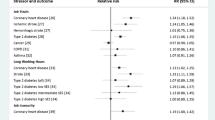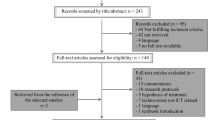Summary
Non-auditory effects of noise were studied among 539 male workers from seven industries. The LAeq, assessed by personal noise dosimetry, has been used to study acute effects. Various indices of total noise exposure, involving level and duration, were developed for long-term effect studies. In the analysis close attention was paid to prevent confounding, e.g. by other adverse working conditions. As expected, hearing loss increased with total noise exposure. Tinnitus was related particularly to hearing loss. Dizziness and hoarseness, however, were not related with noise exposure in this study. Also no correlation could be demonstrated between blood pressure and total noise exposure after correction for age, relative weight and various confounding variables. Use of hearing protection, selection processes and incomplete analysis of interactions between independent variables are suggested for possible explanation. About two-thirds of the workers reported noise annoyance. Various aspects were mentioned, such as irritation, surprise and impairment of communication and perception. Mentally stressful tasks appeared to be the most noise-sensitive. Particularly annoying noise sources, mental work load and time pressure had a relatively large impact on noise annoyance in comparison with the influence of noise level (LAeq) itself. Stress responses were not simply related to the noise exposure level, although consistent positive relations could be demonstrated between symptoms of stress and noise annoyance. Various findings led to the conclusion that noise exposure together with stressful mental activities may lead to disturbed concentration, irritation and annoyance. Experienced stress in turn may render workers more susceptible to noise. To overcome some limitations of this study, cohort studies and studies designed to assess interaction-effects are recommended.
Similar content being viewed by others
References
Broadbent DE (1980) Noise in relation to annoyance, performance and mental health. J Acoust Soc Am 68:15–17
Burns W, Robinson DW (1970) Hearing and noise in industry. HMSO London
Hernberg S (1981) “Negative” results in cohort studies — how to recognize fallacies. Scand J Work Environ Health 7 [Suppl. 4]:121–126
Knípschild P, Meyer H, Sallé H (1984) Wegverkeerslawaai, psychische problematiek en bloeddruk. Tijdschr Soc Gezondheidszorg 62:758–765
Manninen O (1979) A study of the influences of phrasing, scaling and location of questions concerning employees' discomfort ratings due to noise. In: Schutz der Arbeiter vor Lärm. Zentralinstitut für Arbeitsschutz, Dresden, Proc Int Symp 1979, pp 205–218
McLean EK, Tarnopolsky A (1977) Noise, discomfort and mental health. Psychol Med 7:19–62
Mosskov JI, Ettema JH (1977) Extra-auditory effects in long-term exposure to aircraft and traffic noise. Int Arch Occup Environ Health 40:177–184
Spoor A (1972) Audiogram en leeftijd. Tijdschr Soc Geneesk 50, Suppl 2:11–15
Author information
Authors and Affiliations
Rights and permissions
About this article
Cite this article
van Dijk, F.J.H., Souman, A.M. & de Vries, F.F. Non-auditory effects of noise in industry. Int Arch Occup Environ Health 59, 133–145 (1987). https://doi.org/10.1007/BF00378491
Received:
Accepted:
Issue Date:
DOI: https://doi.org/10.1007/BF00378491




